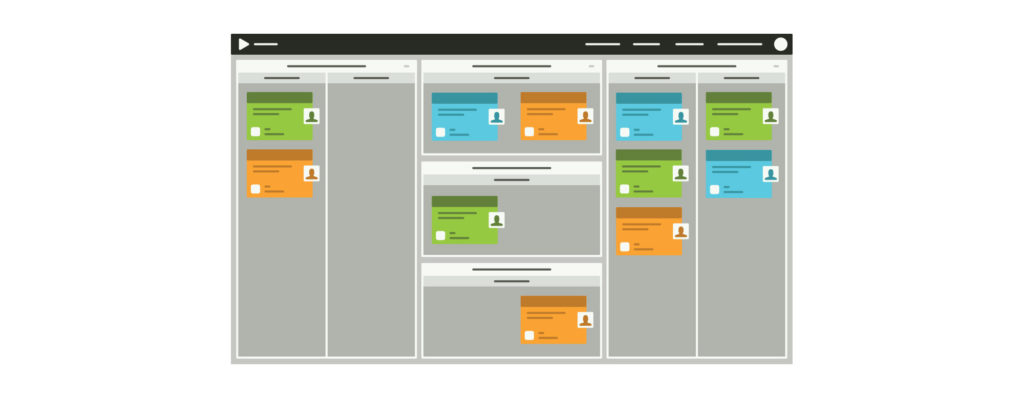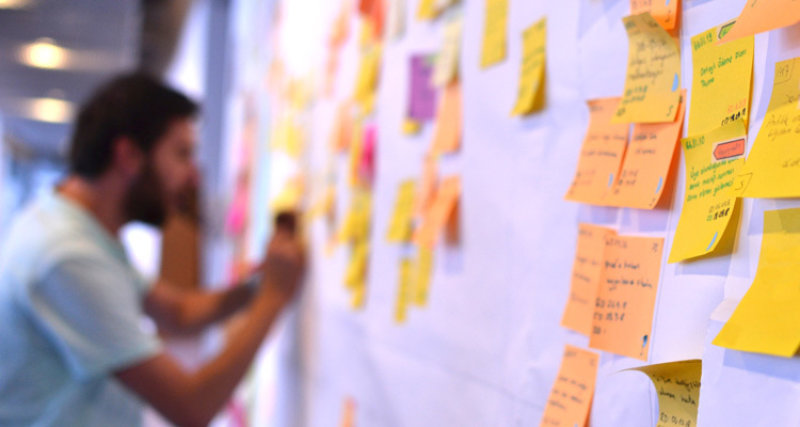
“Don’t ‘over control’ like a novice pilot. Stay loose enough from the flow that you can observe it, modify, and improve it.” — Donald Rumsfeld
Kanban enables teams to achieve a continuous flow of work, and is focused on optimizing an organization’s ability to deliver value to its customer. Achieving steady Kanban flow within your system can seem like a daunting task for teams new to Kanban. Start by focusing on these 5 actionable tips.
5 Tips to Improve Kanban Flow
1. Visualize your Workflow
Put simply — if you can’t see it, you can’t improve it. Visualizing your team’s Kanban workflow not only helps you find opportunities for improvement, but it also helps align your team with other teams, stakeholders, and executives who need transparency into the work.
With a well-mapped Kanban workflow, your team can quickly align on your unique process, see what’s needed to get work done, and identify bottlenecks. Additionally, managers and executives have an at-a-glance view of work status and completion. Human beings process visual information 6,000 times faster than text, so visualizing your workflow helps disseminate critical information at a glance, freeing up your team members to focus on work that truly adds value.

2. Control your Work in Process (WIP)
WIP refers to any piece of work that has been started but is not yet completed. Since value is only delivered once a piece of work has been finished, achieving flow relies heavily on moving work through the Kanban workflow quickly, until it reaches its completed state. While it’s natural for us to want to take on as much work as possible, Kanban teaches us that we can move faster if we focus on fewer things.
Imagine a highway: When the road is at full capacity with cars, traffic comes to a complete stop. When cars are not jam-packed together, they’re able to move at the speed limit and reach their destination faster. This is because too much WIP amplifies the negative effect of any roadblocks in your Kanban workflow, causing ripple effects on resources that may not otherwise have been immediately impacted.
Too much WIP can also result in context switching, which introduces wasted time into the system. Understanding what your team’s ideal WIP is, and limiting the amount of work flowing through your system to that number, can have huge impact on your Kanban flow.
3. Look for Queues
When work waits between steps, a queue is formed. Queues impact your flow because, even though the work is simply in a wait state and no one is actively addressing it, it still counts as part of your WIP. By reducing time spent in queues as much as possible, you can improve flow across your system and improve your team’s cycle time.
Additionally, the formation of a queue is a strong signal of an opportunity to improve — when you see a queue forming, ask yourself, “What can I do to get this work flowing again?”
4. Eliminate Blockers
In Kanban workflows, anything that prohibits a piece of work from moving forward is called a blocker. A few examples of blockers could be:
- The primary owner of the work is on vacation and no one else can pick it up
- A technical limitation prevents the work from moving forward
- Budget has not been approved
Blocked work is different from work in queues because queued work is simply waiting on the next step to pull it into the system, while blocked work is waiting on an external dependency or condition to be removed. Blockers are good signals for team members to swarm on a work item to remove the challenge, as they impede flow by stopping work items in their tracks.
5. Institute Process Policies
Policies are a minimal set of enabling constraints that allow teams to have a shared understanding of how they want work to move through their system. By making these policies explicit in your Kanban workflow, you can reduce confusion about the process and move work through the system seamlessly. Some common Kanban workflow policies include:
- A policy that describes when it’s appropriate to move a card into the “Deploy” lane
- Explanations of various icons that represent critical details on each card
- Cadence of team standup meetings
Measuring Flow in Planview AgilePlace
There are several Planview AgilePlace reports that help teams achieve Kanban flow. Lead Time, Cycle Time, and Throughput reports, in addition to Cumulative Flow Diagrams (CFD), all help teams see how fast their work is moving through the system and where they can focus their efforts to boost flow. Learn how to use these reports here.
The goal of boosting Kanban flow is to deliver value to the end customer as quickly as possible, and this does not happen overnight. Start by using these five tactics to identify, analyze, and act upon opportunities for improvement. Learn how to measure progress with data, and check in regularly as a team to measure whether the changes you’re implementing are having a positive impact on your team’s flow.
![A Global Collaborative Work Management Blueprint [Video]](https://blog.planview.com/wp-content/uploads/2019/07/A-Global-Collaborative-Work-management-blueprint.png)


